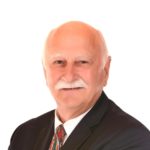Tax Change Stimulates Commercial HVAC Sales
The biggest objection commercial HVAC sales consultants hear is; “We don’t have the money to the replace HVAC equipment.” Thanks to recent tax law changes, profitable commercial businesses now have the financial ability to pay you to swap worn out HVAC equipment for better comfort, greater reliability and lower energy bills.
In 2017 your commercial clients paid about $35,000 in taxes for every $100,000 in net profit. In 2018 their tax rate drops to $21,000 for corporations taxed separately from the owners and $20,000 for passthrough corporations like most HVAC businesses. In 2018 the tax saving for a company earning $100,000 is about $14,000, enough to start the process of buying replacement HVAC equipment from you.
Exciting IRS incentive
The Internal Revenue Code says costs incurred to improve tangible property must be capitalized, not expensed. Capitalized assets like HVAC equipment are depreciated over time. Expensed items are deducted when purchased. If you sold a commercial replacement job for $10,000 before 2018 it took the business years to write off the cost. Now your commercial clients can immediately write off 100% of their HVAC investment and reduce their 2018 taxes even more.
Be first in line
Start before the gold rush begins and your competitors figure out that every profitable business has unexpected money to spend, some for the first time ever.
Start by reviewing all past commercial proposals you didn’t sell. Make contact with everyone who needs new equipment. Survey the project and document opportunities. Provide a proposal detailing how you’ll improve comfort and cut costs. Use ROI to show how your comfort solution is the best investment. Offer financing to make ownership easy.
Sell better comfort
The exciting part of the commercial replacement story is how the best comfort is the best investment. When workspaces are more comfortable people are more productive. If comfort issues cause a $50,000 per year employee to lose 5% of her productivity the cost of poor comfort becomes $2,500. If twenty-five similar employees lose the same productivity the annual cost of poor comfort jumps to $62,500.
According to the Building Owners and Managers Association (BOMA), the number one occupant complaint is space temperature that is either too warm or too cold. BOMA also found if tenant experiences three interruptions in a major service, like heating and cooling, during a 12-month period, there is a 56% probability that tenant will not renew their lease. A Trane Company building comfort study revealed almost 50% of those planning to relocate were willing to pay more money to be more comfortable.
One big reason today’s occupants aren’t comfortable is old HVAC systems weren’t designed to meet today’s workspace and heat load requirements. Take time to tell how you will design the best solution to improve comfort, save money and enhance reliability for years to come.
Determine energy savings
With the customer’s authorization, most utility companies will provide you with a 2-year utility usage history for each commercial client. The utility company may also tell you how your client’s usage compares with similar buildings at the same utility rate. You may also discover that some clients would save substantial money with an energy rate that better matches their current needs and building’s load profile.
Drawing a simple annual energy usage graph can give you and the buyer a good idea when air conditioning and heating is consuming energy. After subtracting HVAC operating cost from total energy cost determine HVAC energy savings.
Turn problems found into dollars lost
Wasted dollars get more attention than wasted BTU’s. One of the easiest ways to get the buyer’s attention is showing how their money is being wasted. Reveal problems found during your evaluation and tell how they each lead to a major failure, poor comfort or wasted energy.
Show a picture of a return that’s too small with the caption like: Lakeland Electric and Water a 20% airflow reduction adds 10% to the air conditioning energy bill.
Show low pressure being registered on refrigeration gauges with a caption like: Texas A&M University found a 23% refrigerant undercharge more than double operating costs.
Reveal ROI
Money follows the best investment. 85% of business managers use return on investment to evaluate capital improvements. ROI shows clients the key financial benefit your HVAC modernization plan offers. Unlike “profits” which means different thing to different buyers, everyone gets ROI.
The good news for the HVAC industry is that replacing worn out HVAC equipment typically produces the greatest return and safest investment. Clients receive a 7% return on investment from a $10,000 commercial unit that saves $700 in energy per year.
Close the sale with financing
Financing allows your clients to solve today’s problems with tomorrow’s tax savings. Mention how clients get better comfort without waiting. Tell how comfort and energy savings helps fund or fully pays to finance their comfort investment.
Without going into detail, mention you have financing available early in the sales process. Your client’s tax cut doesn’t show up as a box full of money so use financing to eliminate cash flow objections and close the sale.
Your biggest obstacle to selling better comfort to commercial clients has been eliminated. In 47 years in this great industry I’ve never seen a better opportunity to profitably grow sales. Take the first step by making contact with one commercial client every today, your bottom line will be glad you did.

Steve Howard
By Steve Howard
Founder, The ACT Group, Inc. and No Pressure Selling®
NOTE: This article first appeared in the January 29, 2018 edition of Air Conditioning, Heating and Refrigeration News.

